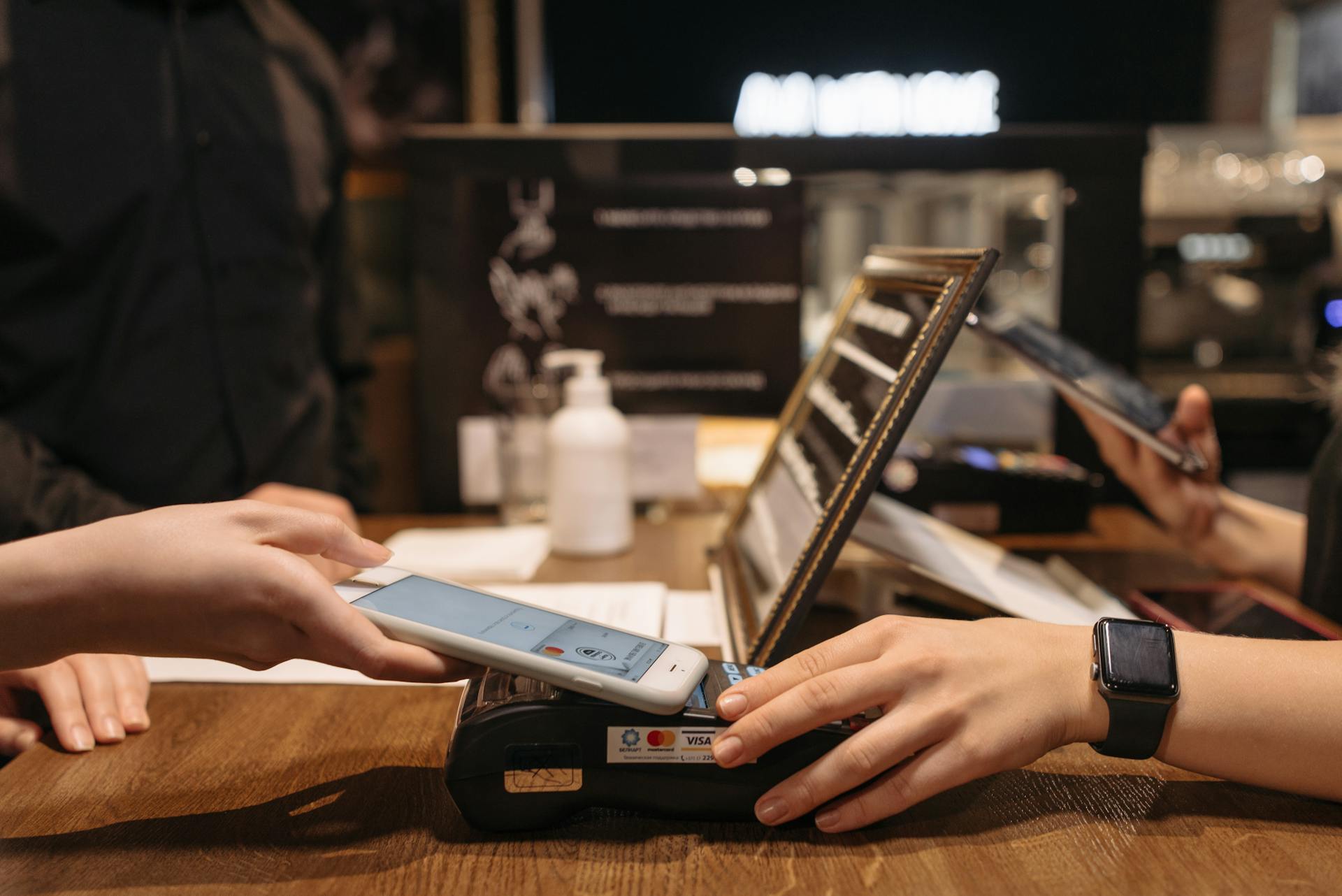
The US Treasury Bill Risk Free Rate is a fundamental concept in finance, but it can be confusing at first. It's essentially a measure of the lowest return on investment that's considered risk-free.
The US Treasury Bill Risk Free Rate is set by the US Treasury Department and is based on the return of short-term US government securities, also known as T-bills. These securities have maturities ranging from a few weeks to a year.
Investors can earn this rate by buying T-bills directly from the government or through a bank. It's a safe and liquid investment option, but the returns are relatively low compared to other investment options.
Readers also liked: Us Treasury Inflation Protected Bonds
What Is the Return?
The return on an investment is a crucial aspect to understand. The risk-free rate of return is the theoretical rate of return of an investment with zero risk.
This rate represents the interest an investor would expect from an absolutely risk-free investment over a specified period of time. The risk-free rate is the benchmark against which all other investments are measured.
The risk-free rate can be calculated by referencing the yield of the Treasury bond matching your investment duration. To calculate the real risk-free rate, you need to subtract the current inflation rate from the yield of the Treasury bond.
For more insights, see: Are Us Treasury Bonds a Good Investment Now
Understanding the U.S. Treasury Bill
The U.S. Treasury Bill is a type of investment that is considered to be risk-free. They are sold at a discount from par at a weekly auction in a competitive bidding process.
T-bills are backed by the good faith of the U.S. government, which has never defaulted on its debt obligations, even in times of severe economic stress. This makes them a very safe investment.
They are short-term securities that mature in one year or less, usually issued in denominations of $1,000. Anyone is free to buy T-bills at weekly Treasury auctions.
T-bills are auctioned at or below their par value, and investors are paid the par value of the security upon maturity. This means there is virtually no interest rate risk while they are held.
The U.S. government will always repay bondholders at par when they mature, making these a form of zero-coupon bond.
On a similar theme: Value at Risk
Financial Asset Pricing and Factors
The risk-free rate plays a crucial role in financial asset pricing, serving as a benchmark against which the return on all other investments is measured. This baseline rate is used in valuation models like the capital asset pricing model (CAPM), where it's added to a risk premium to determine the expected return of an asset.
Check this out: Discount Rate vs Internal Rate of Return
The risk-free rate influences the pricing of bonds, options, and derivatives through models such as the Black-Scholes model. It's an input in these models, affecting the value of options by influencing the cost of carrying the underlying asset.
In bond pricing, the risk-free rate determines bond yields. When the risk-free rate increases, the present value of future cash flows decreases, leading to a decline in bond prices and an increase in bond yields. Conversely, a decrease in the risk-free rate increases the present value of cash flows, causing bond prices to rise and yields to fall.
Here are the key factors that influence the risk-free rate:
- Monetary Policy: Central banks influence the risk-free rate through their monetary policy decisions, particularly changes in the target interest rates.
- Economic Conditions: Macroeconomic factors such as economic growth, inflation, employment levels, and consumer sentiment can impact the risk-free rate.
- Inflation Expectations: Investors demand compensation for expected inflation to preserve their purchasing power, influencing the risk-free rate.
- Supply and Demand for Government Securities: Changes in the supply and demand dynamics for government securities can influence their yields and, consequently, the risk-free rate.
- Market Sentiment and Risk Appetite: Investor sentiment and risk appetite play a role in setting the risk-free rate.
In practice, a truly risk-free rate does not exist because even the safest investments carry some small amount of risk.
Proxies and Limitations
The risk-free rate is a crucial concept in financial analysis, but it's not always easy to get ahold of. Government Treasury Securities, such as Treasury bills (T-bills) or longer-term treasury bonds, are often considered the closest approximation to risk-free assets in many countries.
Worth a look: Risk-free Bond
These securities are typically used as proxies for the risk-free rate, particularly for short to medium-term investment horizons. The yields on these securities are usually used as substitutes for the risk-free rate.
Some other alternatives to the risk-free rate include SOFR, Central Bank Policy Rates, Inflation-Indexed Bonds, and Cash or Cash Equivalents. These proxies can be used when the actual risk-free rate is not available or when a close alternative is needed.
However, it's essential to consider the limitations of these proxies. The risk-free rate assumes risk neutrality, but all investments involve some degree of risk.
The risk-free rate is also influenced by various market factors, including monetary policy decisions, economic conditions, and investor sentiment. Changes in these factors can lead to fluctuations in the risk-free rate over time.
Here are some common proxies for the risk-free rate:
- Government Treasury Securities (e.g., T-bills or longer-term treasury bonds)
- SOFR
- Central Bank Policy Rates (e.g., Federal Funds Rate in the U.S. or the European Central Bank's main refinancing rate in the Eurozone)
- Inflation-Indexed Bonds (e.g., Treasury inflation-protected securities (TIPS) in the U.S.)
- Cash or Cash Equivalents (e.g., money market funds or bank savings accounts)
The risk-free rate varies across countries and currencies, reflecting differences in economic conditions, monetary policies, and geopolitical risk. Using a single risk-free rate for all countries may not properly reflect the riskiness of certain markets or geographical regions.
Frequently Asked Questions
Are treasury rate and risk-free rate the same?
Yes, the treasury rate is often considered the same as the risk-free rate, as it represents the interest paid on a 10-year government Treasury note, the safest investment available. This rate serves as a benchmark for investors to gauge the return on risk-free investments.
Sources
- https://www.investopedia.com/terms/r/risk-freerate.asp
- https://ycharts.com/indicators/10_year_treasury_rate
- https://www.investopedia.com/ask/answers/040915/how-riskfree-rate-determined-when-calculating-market-risk-premium.asp
- https://home.treasury.gov/resource-center/data-chart-center/interest-rates/TextView
- https://www.open.edu/openlearn/money-business/estimating-the-cost-equity/content-section-1.2
Featured Images: pexels.com


